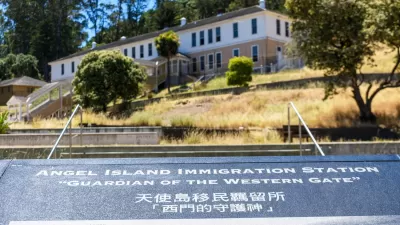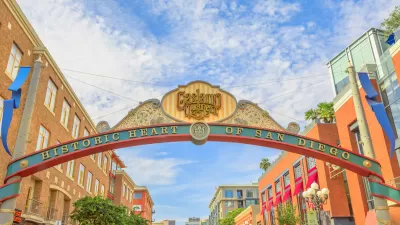Following a recent study finding quantifiable economic benefits for neighborhoods with a mix of older buildings, a writer describes the qualities of older buildings that makes the places they occupy feel so special.
F. Kaid Benfield examines the sources of value in old, or legacy, buildings. Before explaining just what and how older buildings and neighborhoods add to communities and cities, Benfield explains the assumptions of his argument: "the best of our older buildings and neighborhoods have a distinctiveness to them, almost by default."
Benfield describes two of the attributes of older place that add to the vitality of communities: continuity of place and cultural engagement. In the case of the former concept, a place that has managed to retain its original character and charms provides comfort in a quickly changing world. In the case of the latter concept, "[these] places are magical precisely because we have had little or no previous experience, no continuity, with them," writes Benfield.
Benfield also cites new research from the National Trust for Historic Preservation, also discussed in depth by an earlier article by Emily Badger, which "finds that established neighborhoods with a mix of older, smaller buildings perform better on a range of economic, social, and environmental metrics than do districts with larger, newer structures."
Before concluding, Benfield makes it clear that he does not resist change, but that change must be thoughtful—"change that…does not blur the distinction of place but adds to it."
FULL STORY: How Legacy Architecture Shapes Our Experience of Place

Maui's Vacation Rental Debate Turns Ugly
Verbal attacks, misinformation campaigns and fistfights plague a high-stakes debate to convert thousands of vacation rentals into long-term housing.

Planetizen Federal Action Tracker
A weekly monitor of how Trump’s orders and actions are impacting planners and planning in America.

In Urban Planning, AI Prompting Could be the New Design Thinking
Creativity has long been key to great urban design. What if we see AI as our new creative partner?

King County Supportive Housing Program Offers Hope for Unhoused Residents
The county is taking a ‘Housing First’ approach that prioritizes getting people into housing, then offering wraparound supportive services.

Researchers Use AI to Get Clearer Picture of US Housing
Analysts are using artificial intelligence to supercharge their research by allowing them to comb through data faster. Though these AI tools can be error prone, they save time and housing researchers are optimistic about the future.

Making Shared Micromobility More Inclusive
Cities and shared mobility system operators can do more to include people with disabilities in planning and operations, per a new report.
Urban Design for Planners 1: Software Tools
This six-course series explores essential urban design concepts using open source software and equips planners with the tools they need to participate fully in the urban design process.
Planning for Universal Design
Learn the tools for implementing Universal Design in planning regulations.
planning NEXT
Appalachian Highlands Housing Partners
Mpact (founded as Rail~Volution)
City of Camden Redevelopment Agency
City of Astoria
City of Portland
City of Laramie





























